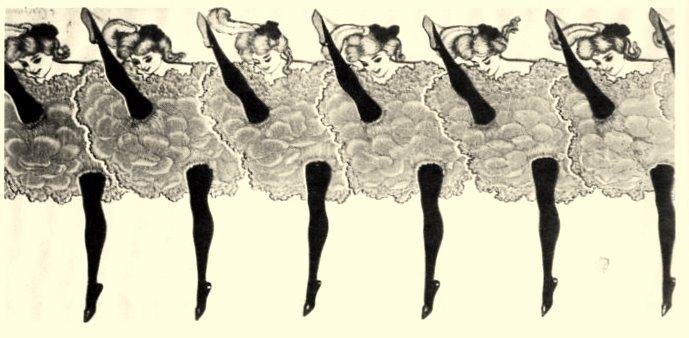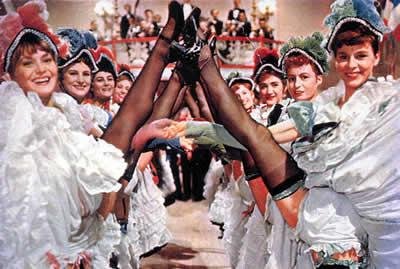Totally Authentic(ate):
Devise and Can-Can


+
What is authentication?
- Registration
- Login
- Change Password
- Forgot Password

Gem'ing up the works
First step is to add Devise to your Gemfile
But we're not done just yet...
And the run bundle install, of course...
gem 'devise'$ bundle installInstalling Devise
In your Terminal/Command Prompt run:

$ rails g devise:installSo just like that devise is installed, right?

Devise a model
We need to tell Devise, in our database, where to store all this fun authentication stuff: email, password, name.
Don't forget get to rake db:migrate!
$ rails g devise Blogger


+
=
What'd that do?
You can now go in your app's code and find a model (blogger.rb), that will look like this:
class Blogger < ActiveRecord::Base
# Include default devise modules. Others available are:
# :confirmable, :lockable, :timeoutable and :omniauthable
devise :database_authenticatable, :registerable,
:recoverable, :rememberable, :trackable, :validatable
endWelcome, blogger
Set up your root page so that it allows you to sign in, or knows that you're already signed in.
<h1>Welcome#index</h1>
<p>Find me in app/views/welcome/index.html.erb</p>
<% if blogger_signed_in? %>
<%= link_to "Sign out",destroy_blogger_session_path, method: :delete, class: "button" %>
<% else %>
<%= link_to "Sign in",new_blogger_session_path %>
<% end %>who's signed in anyway?
You now have access to the Class 'current_blogger'.
<h1>Welcome#index</h1>
<p>Find me in app/views/welcome/index.html.erb</p>
<% if blogger_signed_in? %>
Hello, <%= current_blogger.email %>!<br />
<%= link_to "Sign out",destroy_blogger_session_path, method: :delete, class: "button" %>
<% else %>
<%= link_to "Sign in",new_blogger_session_path %>
<% end %>
Devise views
We can customize the sign-in/sign-up forms.
First we need to create the views for Devise.
$ rails g devise:viewsA new folder has been created, under 'views', called 'devise', and there's a whole bunch of stuff in there!
A Blogger by any other name...
Devise gives you Email and Password, but wouldn't it be great to have Name, too?
We can add attributes to the User just as we would to any Resource.
$ rails g migration AddNameToBloggers name:stringAnd there's one more thing we can't forget to run...

#add the following lines:
before_action :configure_permitted_parameters, if: :devise_controller?
protected
def configure_permitted_parameters
devise_parameter_sanitizer.for(:sign_up) { |u| u.permit({ roles: [] }, :email, :password,
:password_confirmation, :name) }
devise_parameter_sanitizer.for(:account_update) { |u| u.permit(:email, :password,
:password_confirmation, :current_password, :name) }
endSince we have no Blogger controller, we'll need the help of the Application controller...
application controller finally becomes useful!
Change your view
We need to also add fields to our devise/registration views (edit & new), so a name can be entered.
<div><%= f.label :name %><br />
<%= f.text_field :name, autofocus: true %>
</div>autofocus: true means that field will be automatically selected when the page is loaded. I moved this attribute from the e-mail field.
Change your view
Let's use Bootstrap to fancy-up these Devise views...
<div class="row">
<div class="col-md-6 col-md-offset-3">
<h2>Log in</h2>
<%= form_for(resource, as: resource_name, url: session_path(resource_name)) do |f| %>
<div class="input-group input-group-lg">
<%= f.email_field :email, autofocus: true, placeholder: "Email", class: "form-control" %>
</div>
<br/>
<div class="input-group input-group-lg">
<%= f.password_field :password, autocomplete: "off", placeholder: "Password", class: "form-control" %>
</div>
<% if devise_mapping.rememberable? -%>
<div><%= f.check_box :remember_me %> <%= f.label :remember_me %></div>
<% end -%>
<br/>
<div><%= f.submit "Log in", class: "btn btn-primary btn-lg"%></div>
<% end %>
<%= render "devise/shared/links" %>
</div>
</div>devise/sessions/new.html.erb
That seems glyphy
Let's add some glyphicons to add that extra bit of flair!
<span class="input-group-addon glyphicon glyphicon-envelope"></span>
<span class="input-group-addon glyphicon glyphicon-lock" ></span>
Let's remove the partial link reference. How could we add back just the "forgot password?" link under the password field?
Final sign-in page code:
<div class="row">
<div class="col-md-6 col-md-offset-3">
<h2>Log in</h2>
<%= form_for(resource, as: resource_name, url: session_path(resource_name)) do |f| %>
<div class="input-group input-group-lg">
<span class="input-group-addon glyphicon glyphicon-envelope"></span>
<%= f.email_field :email, autofocus: true, placeholder: "Email", class: "form-control" %>
</div>
<br/>
<div class="input-group input-group-lg">
<span class="input-group-addon glyphicon glyphicon-lock" ></span>
<%= f.password_field :password, autocomplete: "off", placeholder: "Password", class: "form-control" %>
</div>
<% if devise_mapping.rememberable? -%>
<div><%= f.check_box :remember_me %> <%= f.label :remember_me %></div>
<% end -%>
<p class="pull-right">
<%= link_to "Forgot Password?", new_blogger_password_path %>
</p>
<br/>
<div class="input-group input-group-lg">
<%= f.submit "Log in", class: "btn btn-primary btn-lg"%>
</div>
<% end %>
</div>
</div>
Your view is changed
Controller Filter
Let's require users to log in before entering any page of our app. We'll add the following filter to our application controller:
class ApplicationController < ActionController::Base
# Prevent CSRF attacks by raising an exception.
# For APIs, you may want to use :null_session instead.
protect_from_forgery with: :exception
before_action :authenticate_blogger!
#all your other devise stuff is below
...Where would we move this filter if we wanted the home page to be available to all users, but the destinations page behind the login?
one
two
three
break!
devising your travel app
Let's add Devise to our Travel app.

Since you already have a Traveler resource, let's call the Devise resource User.
Some soothing sounds as you work...
do the CanCan
Let's add a new gem called 'cancan.' This will allow us to control user roles so that only admins can edit content.
Add the gem to your gemfile and bundle!
gem 'cancan'
$ bundle install
You CanCan
We now create a model specific to cancan.
$ rails g cancan:abilityNow we set roles. Admins can manage all content.
app/models/ability.rb
class Ability
include CanCan::Ability
def initialize(user)
user ||= User.new # guest user (not logged in)
if user.admin?
can :manage, :all
else
can :read, :all
end
end
endRemove Crud buttons
for non-admins
Admins should be the only ones allowed to create, update, and delete (CUD?) on our destinations page. So let's add some logic around our button links in destination/index.html.erb:
<% if can? :update, destination %>
<div class="btn-group">
<%= link_to 'Show', destination, class: "btn btn-default" %>
<%= link_to 'Edit', edit_destination_path(destination), class: "btn btn-default" %>
<%= link_to 'Destroy', destination, method: :delete, data: { confirm: 'Are you sure?' },
class: "btn btn-default" %>
</div>
<% end %>And don't forget the new destination button!
<% if can? :update, @destination %>
<%= link_to 'New Destination', new_destination_path, class: "btn btn-primary" %>
<% end %>Add Admin
This all fine and good, but we don't actually have an admin column defined in our database. So let's add one.
$ rails g migration AddAdminToUsers admin:boolean
Now let's set admin to be true for the blogger of our choice using rails console. Blogger.all will display all bloggers in the db.
$ rails c
> User.all
!
Add Admin
Make sure you have at least 2 users in your database for testing purposes. We'll set one of them to have "true" in their admin field. Find the id of the user you'd like to promote to top dog!
Now try logging in with your admin user and navigating to the destinations page. Notice your edit buttons are in place. Log in with a regular non-admin user and notice the buttons are missing.
> admin_guy = User.find(1)
> admin_guy.admin = "true"
> admin_guy.save
Authorization
In order to automatically authorize all actions on the destinations page we must add this line to the top of the destinations_controller.rb:
load_and_authorize_resourceWe'll also need this method at the bottom of the
application_controller.rb to redirect in case of an exception:
rescue_from CanCan::AccessDenied do |exception|
redirect_to destinations_path, :alert => exception.message
endAnd output the exception message on destinations/show.html.erb:
<% if alert %>
<div id="notice" class="alert alert-danger" role="alert"><%= alert %></div>
<% end %>Authorization
Finally, we'll output the exception message on destinations/index.html.erb:
<% if alert %>
<div id="notice" class="alert alert-danger" role="alert"><%= alert %></div>
<% end %>Go ahead and test this out. Try to browse to "destinations/new" with a non-admin user logged in. The user should be re-routed to the destination index page with error message that says:
"You are not authorized to access this page."

Devise & Can-Can
By argroch
Devise & Can-Can
Using the Devise and Can-Can gems in the projects of the TTS part-time class.
- 1,571



